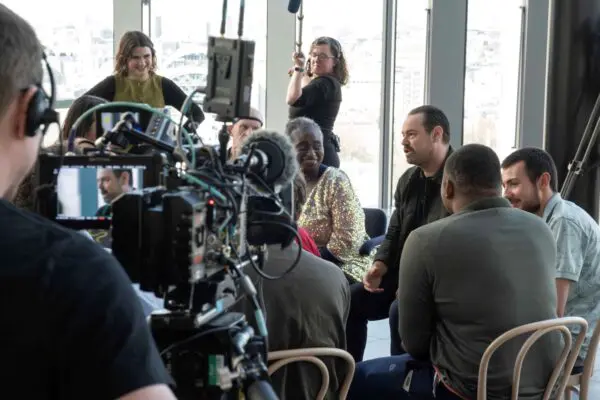This is a great segue into VR. I have had the great fortune to also work in this field since 2011. Unlike AR, VR only works with a head-mounted display (HMD) or headset. But, just for clarity, here is the main difference between AR and VR: AR adds or ‘augments’ the world we are in – for example, in a game we made for PlayStation 3, EyePet, a pet was added to your environment – while VR transports you to a different reality, a virtual one. I think most people are aware of the different experiences and may well have tried both by now. One point of commonality is that the quality of experience can range hugely. From sliding a low power phone into a cardboard box and seeing something similar to View-Master with moving images, to full high-end room-scale VR, transporting you to the deep sea in such experiences as Wevr’s theBlu.
A high-quality VR experience is a step change in engagement for people. I have dined out many times on a video of my mother being ‘attacked by a shark’ in VR. She was truly engaged and took part in the kind of deep sea diving experience that she would never have attempted in real life.
So, it’s clear to those who are in this industry that VR is coming. But, as some people think, what is the delay? Well, it’s hard. Technically, creatively and commercially.
Most of the VR headsets out there today are what I would call ‘Beta 0.9’. Meaning we haven’t seen the first tech to have real mass consumer appeal just yet. We do have high-end PC headsets, which give great experiences, but they have a hefty price tag. And, let’s be honest, you need a small IT department to run them as well.
Then we have the mid-level headsets. The PlayStation VR headset is the most consumer-friendly, but it still has some issues – lack of coherent control systems, only front facing and so on. There are some alternative hand controllers too, but it mainly uses the traditional game controllers, making this experience really targeted at gamers. Although, it’s worth noting, that PlayStation probably has the most engaged, purchasing audience.
Finally, there are the mobile headsets. Great price, especially if added to your existing phone, but they tend to be clumsy and prone to overheating. (There is a new generation of standalone headsets coming soon that will solve quite a few of these problems.) The biggest benefit is that these require no high-end PC, so the entry price point is more affordable. And they are ready to work just by turning them on.
My belief is that version 2.0 of all of these, coming in approximately 2020 or 2021, will be the moment for much broader consumer adoption of the technology.
Meanwhile, we have another VR trend: location based VR. In essence, VR experiences are being made available in shopping centres and the likes. Just as with the coin-op arcades I used to frequent back in the 1980s, VR arcades and out-of-home experiences are gaining significant investment and pilots have been very successful (look at The VOID, Dreamscape VR and others). At this stage, these allow consumers a high-quality VR experience at a cinema ticket price. And, perhaps more importantly, it will help educate the public as to the benefits of VR. We will also start to see more VR being used in education and health, but that’s another story…











